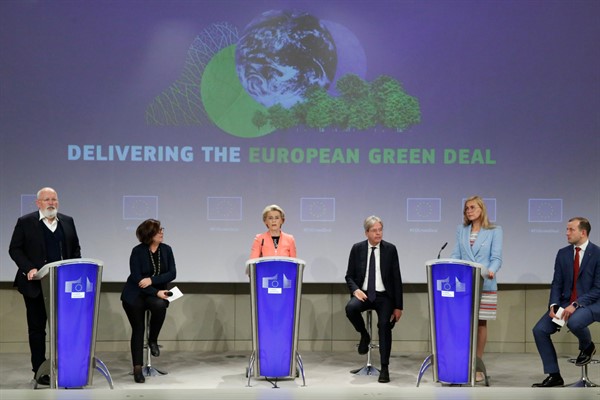The European Commission last week unveiled a package of climate policy proposals it dubbed “Fit for 55,” a nod to the European Union’s goal of cutting greenhouse gas emissions by 55 percent relative to 1990 levels by 2030. While those proposals have now grabbed the spotlight, they are still subject to negotiation and potentially significant changes during the lengthy legislative process they will now undergo before becoming law.
With that in mind, it’s worth taking a looking at the legal framework from which those policy proposals emerged: a new climate law approved by the European Parliament and the European Council at the end of June. In addition to establishing the EU’s 2030 emissions reduction target, the law also commits the bloc to collectively reach “net zero” emissions—meaning a balance between the release of greenhouse gases into the atmosphere and their removal from it, for example by planting trees—by 2050. The law had been long in the making; its key features had already been agreed back in April.
The net zero component of the law is significant, as a global balance between carbon emissions and removal has to be reached by the middle of the century in order to meet the temperature objectives of the Paris Agreement on climate change. A growing number of countries and companies have set themselves net zero targets. According to a recent survey, almost two-thirds of global emissions and a slightly higher share of global GDP are subject to such a target. However, the EU is one of only a few jurisdictions, and the largest emitter so far, to put this commitment formally into law.

